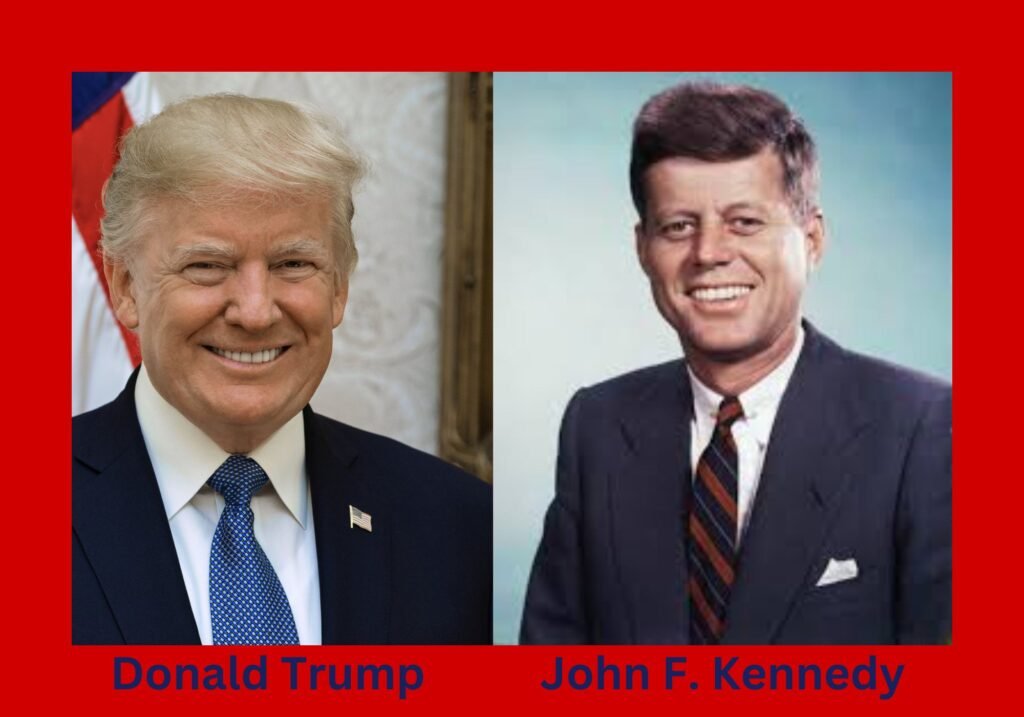Introduction
The assassination of President John F. Kennedy on November 22, 1963, stands as a defining moment in American history, shrouded in mystery and intrigue. For over six decades, the question of who killed JFK and why has fueled countless debates, investigations, and conspiracy theories. Recently, President Donald Trump reignited public interest by declassifying approximately 80,000 pages of previously secret documents related to the JFK assassination on March 18, 2025. This historic release offers fresh insights into one of the most enduring enigmas of the 20th century. In this article, we dive deep into the events of the JFK assassination, the subsequent investigations, the persistent conspiracy theories, and what the newly released JFK files reveal about this pivotal tragedy.
The Assassination of President John F. Kennedy
On a crisp autumn day, November 22, 1963, President John F. Kennedy was fatally shot while traveling in an open-top motorcade through Dealey Plaza in Dallas, Texas. Accompanied by First Lady Jacqueline Kennedy, Texas Governor John Connally, and Connally’s wife, Nellie, the president was waving to cheering crowds when gunfire erupted at approximately 12:30 p.m. Central Time. According to the official account, two bullets struck Kennedy—one in the upper back and another in the head—causing catastrophic injuries. He was rushed to Parkland Memorial Hospital, where he was pronounced dead at 1:00 p.m.
Within hours, authorities arrested Lee Harvey Oswald, a 24-year-old former U.S. Marine and employee at the Texas School Book Depository, from where the shots were allegedly fired. Oswald was charged with the JFK assassination but denied involvement, claiming he was a “patsy.” Two days later, on November 24, 1963, Oswald was shot dead by Jack Ruby, a Dallas nightclub owner, during a live televised transfer to the county jail. Ruby’s actions extinguished any chance of a trial and deepened public suspicion about the true nature of the JFK assassination.
For more details on the timeline, visit the National Archives’ JFK Assassination Records.
The Investigations into the JFK Assassination
Following Kennedy’s death, President Lyndon B. Johnson established the President’s Commission on the Assassination of President Kennedy, commonly known as the Warren Commission, to investigate the tragedy. Led by Chief Justice Earl Warren, the commission conducted a 10-month inquiry and released its report in September 1964. It concluded that Lee Harvey Oswald acted alone in the JFK assassination, firing three shots from the sixth floor of the Texas School Book Depository with a Mannlicher-Carcano rifle. The report asserted there was no credible evidence of a conspiracy, domestic or foreign.
However, the Warren Commission’s findings faced immediate skepticism. Critics pointed to inconsistencies in witness testimonies, ballistic evidence, and the “magic bullet” theory, which posited that a single bullet caused multiple wounds to both Kennedy and Connally. Public distrust prompted further scrutiny, leading to the formation of the House Select Committee on Assassinations (HSCA) in 1976. The HSCA’s 1979 report contradicted the Warren Commission, concluding that Kennedy was “probably assassinated as a result of a conspiracy,” though it could not identify the conspirators beyond suggesting possible involvement of organized crime.
To explore the official reports, check the Warren Commission Report and the HSCA Findings.
Conspiracy Theories Surrounding the JFK Assassination
The JFK assassination has spawned a plethora of conspiracy theories, each attempting to unravel the mystery left by unanswered questions. Some of the most prominent include:
- CIA Involvement: Theorists allege the Central Intelligence Agency orchestrated the assassination due to Kennedy’s handling of the Bay of Pigs invasion or his perceived softness on communism.
- Mafia Connection: The mob, angered by Attorney General Robert F. Kennedy’s crackdown on organized crime, may have sought revenge by targeting his brother.
- Second Shooter Hypothesis: Acoustic evidence and eyewitness accounts suggest a second gunman may have fired from the grassy knoll in Dealey Plaza.
- Soviet or Cuban Retribution: Some speculate that the assassination was retaliation for U.S. actions during the Cold War, including the Cuban Missile Crisis.
These theories persist due to gaps in the official narrative and the secrecy surrounding government files—until recently. For an in-depth look at these theories, reputable sources like History.com offer balanced perspectives.
The Declassified JFK Files and President Donald Trump’s Role
The JFK Assassination Records Collection Act of 1992 mandated the release of all government records related to the assassination by October 26, 2017, unless withheld for national security reasons. During his first term, President Donald Trump authorized the release of thousands of documents in 2017 and 2018, but some remained classified. On March 17, 2025, Trump directed the declassification of approximately 80,000 pages of previously withheld JFK files, a move he described as fulfilling a promise to “bring transparency to the American people.”
These declassified JFK documents, now accessible via the National Archives, include records from the CIA, FBI, Secret Service, and other agencies. The release marks the most comprehensive disclosure to date, removing redactions that obscured critical details for decades. Trump’s decision has been praised by transparency advocates but has also reignited debates about what the files might reveal—or conceal—about the JFK assassination.
What Do the Newly Released JFK Files Reveal?
Early analyses of the declassified JFK files, reported by outlets like The New York Times and CBS News, indicate no bombshell evidence that rewrites the official narrative. The documents reinforce the Warren Commission’s conclusion that Oswald acted alone, offering detailed accounts of his movements, including a 1963 trip to Mexico City where he met with Cuban and Soviet embassy officials under CIA surveillance. While this confirms Oswald was monitored, it does not substantiate claims of a broader conspiracy.
Historians like Larry Sabato of the University of Virginia have noted that the files provide “a treasure trove of Cold War context” rather than definitive answers about the JFK assassination. For instance, unredacted memos reveal internal CIA debates about Oswald’s potential as a double agent, but no direct link to the shooting emerges. The absence of a smoking gun has disappointed some conspiracy theorists, yet the sheer volume of data—spanning surveillance logs, informant reports, and interagency correspondence—offers researchers new avenues to explore.
Conclusion
The assassination of President John F. Kennedy remains a haunting chapter in American history, its mysteries amplified by decades of secrecy and conjecture. President Donald Trump’s release of the JFK files in March 2025 has provided unprecedented access to government records, yet the core question—did Oswald act alone?—remains unresolved for many. As scholars and the public pore over these documents, the JFK assassination continues to symbolize the tension between truth and trust in governance. To dig deeper, explore the National Archives’ collection and draw your own conclusions about this enduring enigma.
FAQs About the JFK Assassination
1. What happened during the JFK assassination on November 22, 1963?
President John F. Kennedy was shot twice while riding in a motorcade in Dallas, Texas. He died within 30 minutes, and Lee Harvey Oswald was arrested as the lone gunman.
2. Who was Lee Harvey Oswald?
Oswald was a former Marine with Marxist leanings who worked at the Texas School Book Depository. He was charged with the JFK assassination but killed by Jack Ruby before trial.
3. What did the Warren Commission conclude about the JFK assassination?
The commission determined that Oswald acted alone, firing three shots, and found no evidence of a conspiracy.
4. What are the main conspiracy theories about the JFK assassination?
Theories suggest involvement by the CIA, Mafia, a second shooter, or foreign powers like the Soviet Union or Cuba.
5. What do the declassified JFK files released in 2025 reveal?
The files provide details on Oswald’s surveillance but lack conclusive evidence of a conspiracy, aligning with the official lone-gunman narrative.
6. Why did President Donald Trump declassify the JFK files?
Trump aimed to honor a campaign pledge and address public demand for transparency about the JFK assassination.
7. Are there still classified documents related to the JFK assassination?
While most files are now public, a small fraction remains withheld, fueling ongoing speculation.



